#British crown jewels
Explore tagged Tumblr posts
Text

Crown of St. Edward a.k.a. Coronation Crown ♕ British Crown Jewels
#royal jewels#british royal family#queen elizabeth ii#queen elizabeth#british crown jewels#crown jewels#crown#gold crown#diamond crown
40 notes
·
View notes
Text







Source: CNN
youtube
World's second-largest diamond found in Botswana | BBC News
23 August 2024
The second-largest diamond ever found - a rough 2,492-carat stone - has been unearthed in Botswana at a mine owned by Canadian firm Lucara Diamond.
It is the biggest find since the 3,106-carat Cullinan diamond, found in South Africa in 1905 and cut into nine separate stones, many of which are in the British Crown Jewels.
The diamond was found at Karowe mine, about 500km (300 miles) north of Botswana's capital, Gaborone.
Botswana's government said it was the largest diamond ever discovered in the southern African state.
#Botswana#diamond#Cullinan Diamond#Lucara Diamond Corp.#Karowe mine#rough diamond#MDR-XTR technology#Mega Diamond Recovery (MDR) X-ray Transmission (XRT) technology#Lesedi La Rona#Graff#Premier mine#Botswana President Mokgweetsi Masisi#Youtube#Lucara Diamond#British Crown Jewels#Gaborone#diamond mine
0 notes
Text
The Crown Jewels of the monarchy of the United Kingdom of Great Britain and Northern Ireland are today kept in the Tower of London and date mostly to the 17th century, with a few later sparkling additions such as the Koh-i-Noor and Cullinan diamonds. The regalia does, though, include several medieval articles and many of the gemstones have a much older (and often darker) history than the crowns and sceptres in which they today find themselves.
Kings have given themselves crowns ever since antiquity, but in England, it was really William the Conqueror in 1066 who began the trend for lavish display, especially during the coronation ceremony in Westminster Abbey, a tradition followed by almost all monarchs ever since. The Crown Jewels include some unusual items besides the traditional crowns, sceptres, and orbs, such as spoons, swords, spurs, and salt cellars. The Crown Jewels are on permanent public display, but they do make occasional appearances in more grander settings such as the State Opening of Parliament and state banquets.

Early History
Medieval manuscripts abound with scenes of coronations where archbishops place crowns on the sovereign's head, but the earliest detailed text description of a coronation date to 973 and the crowning of the Anglo-Saxon king Edgar (r. 959-975) in Bath. English kings before that may well have settled for an ornate helmet rather than a crown. William the Conqueror began the tradition of holding a coronation at Westminster Abbey, he himself being crowned there on Christmas Day 1066. Subsequent kings and queens, all keen to maintain a link with history and emphasise their legitimacy for the role, repeated many of the ceremonial elements which are still a part of the coronation ceremony today.
Much of the original regalia was sold off in bits & pieces, melted down or destroyed in 1649 following Charles I's Execution.
The various crowns and jewels belonging to the monarchy were traditionally kept at Westminster, the Tower of London, or travelled with the sovereign as they moved around the kingdom. In times of rebellion, the Crown Jewels had to be moved to a greater place of safety. The hapless King John of England (r. 1199-1216), for example, managed to lose some of the Crown Jewels in a river as he fled from rebel barons in October 1216 when the king lost control of London. Consequently, the next king, Henry III of England (r. 1216-1272) required some new regalia. Henry was a fan of Edward the Confessor (r. 1042-1066) who was later made a saint and who in many ways was seen as the spiritual founder of the monarchy as it became in the medieval period and as it is today. Henry III built a new shrine to Edward the Confessor in Westminster Abbey, and it is likely that robes, jewels, and the gold Saxon crown or diadem used by him were all incorporated into the new regalia of the 13th century. This legacy is still seen today in the use of the name St. Edward's Crown for any crown that is used in a new sovereign's coronation ceremony (although there is also a specific crown that bears that name). Charles II of England & Royal RegaliaJohn Michael Wright (Public Domain)

The 1660 CE Restoration
Unfortunately, much of the original regalia was sold off in bits and pieces, melted down or destroyed in 1649 following the execution of Charles I of England (r. 1600-1649) and the (what turned out to be) temporary abolishment of the monarchy. Tantalising glimpses of what was lost can be seen in the portraits of kings prior to 1649 such as Charles I by Daniel Mytens, painted in 1631 and which shows behind the king the imperial crown likely made for Henry VII of England (r. 1485-1509. The 1660 Restoration of the monarchy necessitated the production of new regalia which would be put into immediate use at the coronation of Charles II in 1661 (r. 1660-1685). Although it is not clear exactly by what means they were found or reacquired, many of the precious stones that survived the old regalia were incorporated into the new Crown Jewels of the 17th century.
The Imperial State Crown contains the medieval Black Prince's Ruby.
Two items which do survive complete from the pre-1649 regalia are the coronation spoon and the eagle ampulla. The latter is used to store holy oil which is poured into the spoon and used to anoint the monarch during the coronation ceremony. The anointing is done by the archbishop who pours a small quantity of oil on the monarch's head, breast and palms. Both items are made from gold, and the style of the decorative artwork of the spoon suggests it dates to the 12th century while the ampulla was perhaps made in the 14th century and then had its exterior surface re-engraved in the 17th century.
The Crowns
St. Edward's Crown
St. Edward's Crown was made for the coronation of Charles II in 1661, possibly using parts of one of the crowns damaged by the Parliamentarians. It is gold, weighs 2.3 kilos (5 lbs) and is used in the coronation but, because of its great weight, only at the moment of actually crowning the monarch. It is then usually replaced by another lighter crown such as the Imperial State Crown. The crown, like most of the others in the collection, has a ring of ermine fur and an inner cap of purple velvet, purple being associated with rulers ever since Roman times. The crown, also like many others, has arches and in the centre, a mini-orb or monde surmounted by a cross which is to symbolise that only God is above the monarch. Curiously, the crown was only ever filled with hired gems when it was needed for a coronation and not until 1911 did it receive permanent settings. British Crown JewelsUnknown Artist (Public Domain)

Imperial State Crown
Also known as the Crown of State, the Imperial State Crown was created for the coronation of Queen Victoria (r. 1837-1901) in 1838 as a lighter alternative to St. Edward's Crown later in the coronation ceremony. It was also used by her son Edward VII (1901-1910). The crown then had its frame remodelled before its use by George VI (r. 1936-1952 in his coronation in 1937 and by his daughter and successor Elizabeth II (r. 1952-2022) at her coronation in 1953. This crown is also worn (or at least is presented) at state occasions such as the State Opening of Parliament.
Made of gold and decorated with oak-leaf patterns, it is perhaps the most spectacular of all the crowns and certainly the most colourful with many stones coming from earlier crowns. Weighing just over one kilogram (32 oz), it contains over 2,800 diamonds, 17 sapphires, 11 emeralds, four rubies, and 269 pearls. Amongst these are the central Black Prince's Ruby (actually a balas or spinel), below it the 317-carat Cullinan II diamond (aka Second Star of Africa), as well as the 104-carat oval-cut Stuart Sapphire (set at the back) and Saint Edward's Sapphire (set in the top cross). St. Edward's Sapphire, an octagonal rose cut stone, is said to have been taken from the ring of Edward the Confessor making it the oldest item in all of the Crown Jewels. The king once gave the ring away to a beggar, but it was returned to him by two pilgrims. These pilgrims had miraculously met Saint John the Evangelist in Syria who had explained that he had been the beggar in disguise. The four elongated pearls hanging from the crown's finial (where the arches meet) are traditionally attributed to Queen Elizabeth I (r. 1558-1603), but there is no documentary evidence for this association.
The irregular-shaped Black Prince's Ruby was given to Edward of Woodstock (1330-1376), eldest son of Edward III of England (r. 1327-1377) by Pedro I the king of Castile in 1367 in gratitude for Edward's martial skills. Edward was known as Edward the Black Prince possibly because of the black armour he wore. The stone was later set into a crown famously worn by Henry V of England (r. 1413-1422) at the battle of Agincourt in 1415 and was long considered a true ruby.
Imperial Crown of India
The Imperial Crown of India was made for George V (r. 1910-1936) to wear at the Delhi Durbar ('Court of Delhi') on 12 December 1911, in effect, a separate coronation as the Emperor of India. A special crown had to be made because a statute law prohibited taking the usual state crowns out of the country. The new crown has eight half-arches and contains many jewels from India itself with standout stones being the square emerald in the top cross. It has an incredible 6,002 diamonds and other gems studded around it but despite the trouble taken to make such a fabulous object, the crown was only ever worn once. Queen Mary's Crown with Koh-i-Noor DiamondUnknown Artist (Public Domain)

Crown of Queen Elizabeth the Queen Mother
This crown was made of platinum in 1937. The 105.6-carat Koh-i-Noor diamond from India has appeared in several crowns but now rests in the Crown of Queen Elizabeth the Queen Mother. The Koh-i-Noor, like many precious gems, has a long and intriguing history. It was perhaps found in the Golconda mines of the Deccan and once belonged to the Mughal prince Babur (1483-1530). When the Persian leader Nader Shah (1698-1747) captured Delhi in 1739, he acquired the diamond despite the then Mughal emperor trying to hide it in his turban. When he first saw the stone, Nadir Shar described it as a 'mountain of light' and so the name Koh-i-Noor has stuck. Ownership changed again in the mid-18th century when the Durani of Afghanistan acquired it. In 1813, it was then given as a gift to the ruler of the Punjab, Maharaja Ranjit Singh (1780-1839).
The great Koh-i-Noor diamond is said to bring luck to a female wearer & bad luck to a male one.
The East India Company next acquired the diamond when it took over the region in 1849 and the peace treaty which ended the Anglo-Sikh Wars (1845-49) specified that the stone was to be given to Queen Victoria. On receiving the diamond, the queen was said to have been dissatisfied with the lack of sparkle of its rose-cut and so she had it reworked with more facets as an oval-cut brilliant (reducing it from 186 to 105 carats) and wore it as a brooch. The great diamond is said to bring luck to a female wearer and bad luck to a male one, hence it has only appeared in various Queen consort crowns. The Queen Mother's Crown is additionally set with 2,800 other diamonds, most of which also came from Queen Victoria's collection. One diamond of note sits below the Koh-i-Noor and weighs 17 carats. It was given to Queen Victoria by the Sultan of Turkey in gratitude for help during the Crimean War (1853-56).
Other Crowns
Other crowns in the collection include Mary of Modena's Crown (wife of James II of England, r. 1685-1688) and used in her coronation of 1685. The crown is made of gold and studded with diamonds and pearls. There is the simple yet elegant Queen Victoria's Crown (1870), Queen Mary's Crown (consort of George V) which can have its arches removed to transform it into a diadem, and the late-18th century gold Prince of Wales Crown which, as a prince's crown, only has one arch instead of the usual two for a king or queen's crown. British Sovereign's Sceptre with Cullinan I DiamondUnknown Artist (Public Domain)

Sceptres, Rods, & Orbs
The sceptre is a traditional symbol of royal power and justice. The Sovereign's Sceptre (aka King's Sceptre) was first made in 1661, with modifications being added subsequently. Today, it has the 530-carat Cullinan I diamond, also known as the First Star of Africa, sparkling at the top of it. The pear-shaped diamond, largest of the four Stars of Africa and named after the chairman of the mine where it was found in Transvaal, is the largest colourless top-quality cut diamond in the world.
The uncut 3,106-carat diamond was presented to Edward VII (r. 1901-1910) by the Transvaal Government as a gift for his 66th birthday. Curiously, it was simply posted by registered mail while a decoy was used in an armoured ship everyone thought contained the real stone.
The diamond was cut in 1908 into nine large stones (Cullinan I - IX) and 96 small brilliant-cut diamonds. The largest stone, the Cullinan I, was then added to the Sovereign's Sceptre for the coronation of George V in 1911. Cullinan II, as we have seen, was set into the Imperial State Crown but both stones can be removed, joined and worn as a pendant, as was done by both Queen Alexandra (consort of Edward VII) and Queen Mary, the latter even wore a pendant of Cullinan I and II and another pendant of Cullinan III and IV all at once.
Other sceptres in the Crown Jewels have a dove at the top to represent the monarch's role as guardian of their people. There are also ivory rods to be held by Queen consorts. The Sovereign's Orb topped by a cross is symbolic of the Christian monarch's domination of the secular world and is placed in the sovereign's left hand during the coronation ceremony. The hollow gold orb, set with pearls, precious stones and a large amethyst beneath the cross, was made in 1661 and has been used in every coronation since then.
Miscellaneous Items
The crown Jewels include much besides crowns and sceptres. There are maces, rings, bracelets, golden robes, trumpets, candlestick holders, salt cellars, tankards, chalices, dishes, a massive wine bowl, and a font and basin used for royal christenings.

As noted, the oldest item is the 12th-century Coronation Spoon which has decorative incisions of strap-work and filigree scrolls. The eagle ampulla used to store holy oil is likely from the late-14th century if the archaic screw of the removable head is a reliable indicator. The outer surface was reworked in the 17th century.
Coronation Spoon, British Crown JewelsUnknown Artist (Public Domain)
The rings in the Crown Jewels include the 'Ring of Kingly Dignity' which is placed on the monarch's third finger of the left hand (where a wedding ring is traditionally worn). The one used today, the Sovereign's Ring, was originally made in 1831 for William IV (r. 1830-1837) and has a cross of Saint George (patron saint of England) in rubies against a blue background of a single sapphire.
As traditionally a monarch was also a medieval knight, the coronation ceremony involves symbols associated with that rank such as golden spurs and a sword. There are several swords in the Crown Jewels, all richly decorated and studded with jewels. The swords given to the monarch at coronations today are the Sword of State, which dates to 1678, and the Jewelled Sword of Offering, which was first used by George IV (r. 1820-1830) for his coronation in 1821. The latter sword has gems inlaid in its scabbard to form the national emblems of England, Scotland, and Ireland. Other swords include the Sword of Temporal Justice, Sword of Spiritual Justice, and the blunt Sword of Mercy (aka 'Curtana'); all feature in the coronation ceremony and all are survivors of the destruction of the Crown Jewels in 1649.
There are ten ceremonial maces in the Tower collection today (and another three in Westminster for Parliament, the House of Lords, and a spare) which are traditionally carried by sergeants-at-arms during the coronation. These were made in 1661, and each measures 1.5 metres (4.9 ft.) in length and weighs 10 kilos (22 lbs). There is the huge, one-metre wide Grand Punch Bowl, made in 1820-30 of gold and weighing 248 kilograms (546 lbs). It was designed to cool up to 144 bottles of wine. On a smaller scale, there are quite a few ornate salt cellars in the collection (from the days when salt was a precious commodity), perhaps the most impressive being the gold and bejewelled Exeter Salt Cellar made to resemble a castle in 1630. This cellar and other service items were for use in coronation banquets, the last such event being held in 1821.
The Crown Jewels Today
Ever since 'Colonel' Blood infamously attempted to steal the Crown Jewels in 1671 when they were stored in the Lower Martin Tower of the Tower of London, attempts have been made to improve their security. Visitors today can admire the treasures in the Jewel House inside the Waterloo Barracks and stand on a moving walkway which, somewhat tantalisingly, transports them gently past the glittering glass display cases. For a more select audience, many of the pieces of the Crown Jewels can be seen in action at state events. Queen Elizabeth II continued to wear many of the jewels personally or to permit other members of the royal family to do so at such events as state banquets to receive visiting heads of state. For example, the Cullinan III and IV diamonds, known by the royals as 'the chips', are sometimes worn as a brooch and pendant with a platinum setting by the Queen and by the Duchesses of Cornwall and Cambridge.
0 notes
Text


Catherine's Royal Vault : Clarence House announced the engagement of Prince William of Wales to Miss Catherine Middleton.
#british royal family#british royals#royalty#brf#royals#royal#british royalty#kate middleton#catherine middleton#duchess of cambridge#princess of wales#the princess of wales#princess catherine#catherine princess of wales#engagement announcement#EngagementAnnouncement10#16112010#princess kate#royaltyedit#royalty edit#royal fashion#fashion#style#crown jewels#jewellery#jewels#necklace#earrings#catherine's royal vault.#catherine's royal vault
91 notes
·
View notes
Text

#higginsandcole#London#england#imperial state crown#crown#jewels#british royal family#king charles iii#coach
113 notes
·
View notes
Text
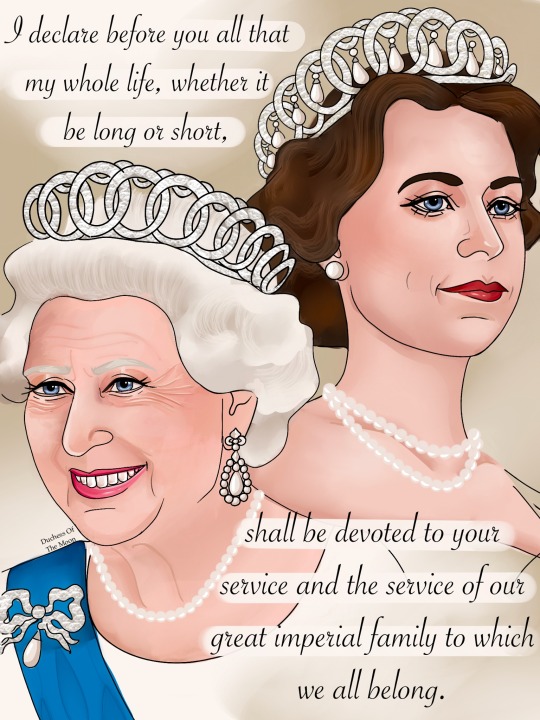
Tribute to Queen Elizabeth II {2024} Gift for my moms birthday
#elizabeth ii#queen elizabeth ii#queen#Queen Elizabeth#queen of england#art#art on tumblr#artist#digital art#artists on tumblr#artwork#fanart#my art#portait#the royal family#kate middleton#elizabeth windsor#the crown#royal#the royals#queen elizabeth the second#royal portrait#art history#british royal family#british royalty#royal jewels#illustration#royalty#england#princess elizabeth
48 notes
·
View notes
Text
Coronation Jewels
Even though there were no tiaras for the coronation of King Charles III, there were still plenty of stunning jewels on display. Here are my favorite jewelry looks.
Queen Camilla of the United Kingdom
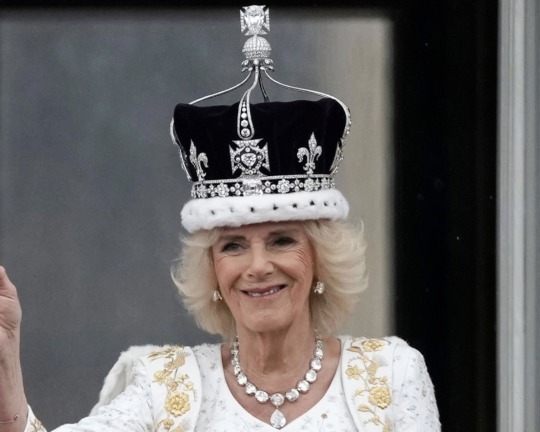
Queen Camilla wore an altered version of Queen Mary's Crown with Queen Victoria's Coronation Necklace. I can't quite tell which earrings she's wearing but they are not Queen Victoria's Coronation Earrings. Overall she didn't wear as much jewelry as I was hoping for but she looked wonderful so it was probably the right choice.
Queen Suthida of Thailand

Queen Suthida wore Queen Sirikit's Sapphire Suite that contains beautiful and absolutely massive sapphires. She also wore the Nine Gems Belt which is meant to bring good luck to the wearer.
Queen 'Masenate of Lesotho
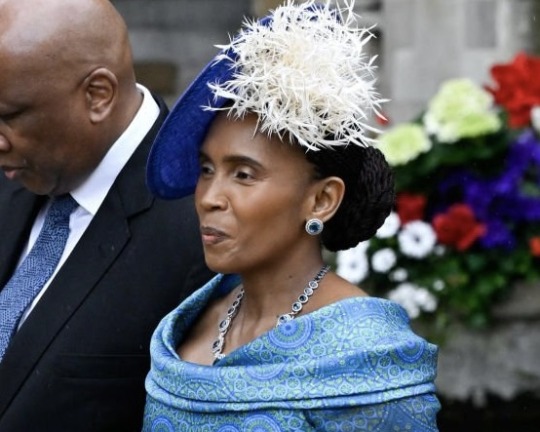
I wish we had a better look at Queen 'Masenate's necklace with mysterious blue gemstones. It's stunning and seems familiar but I can't place it.
Queen Sibonelo LaMbikiza of Eswatini

I also want a better look at Queen Sibonelo's big diamond necklace. It looks like there are a row of rubies along the outer edge. Update: I found a better picture!
Queen Azizah of Malaysia
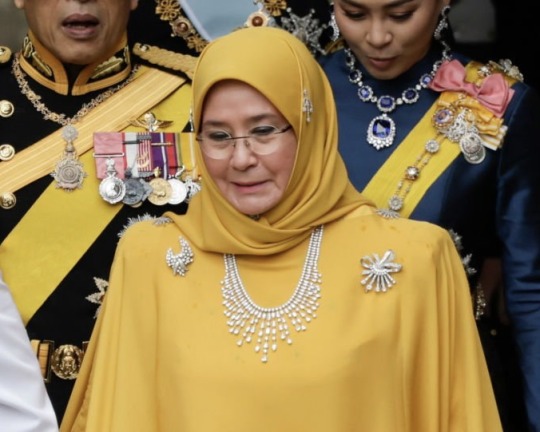
Queen Azizah looked lovely with her diamond fringe necklace and multiple brooches.
Queen Máxima of the Netherlands
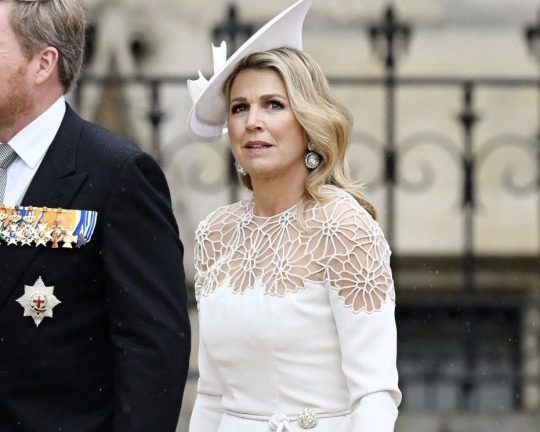
Queen Máxima took the no tiaras dress code personally and wore the biggest diamonds she could. Her earrings are made from the large diamonds of the Stuart Tiara and she wore another big diamond on her belt from a stomacher that belonged to Queen Emma.
Princess Eugenie of York
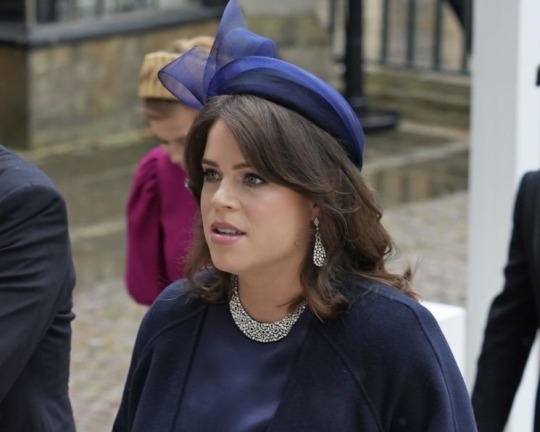
Princess Eugenie debuted the Albemarle High Jewellery Diamond Collar Necklace and Earrings by Garrard. I would not be surprised if they were a loan because together they cost $162,000.
Queen Letizia of Spain
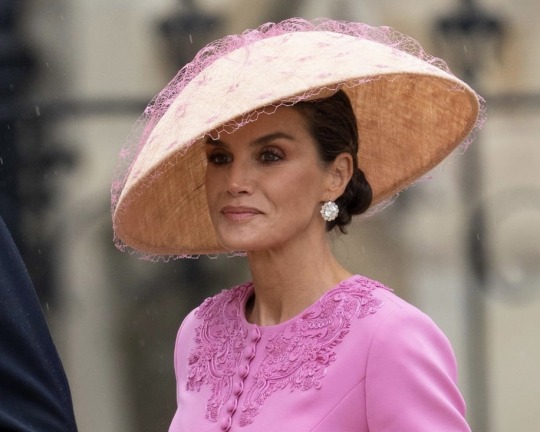
Queen Letizia also wore big diamonds with the Queen Ena's Diamond Earrings from the Joyas de Pasar.
Crown Princess Mary of Denmark
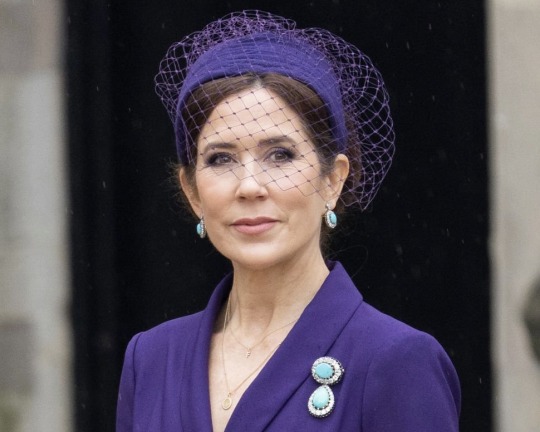
Crown Princess Mary debuted slightly simplified forms of the turquoise jewels given to her by Queen Margrethe last year for her 50th birthday. The jewels are Danish royal heirlooms and even if they weren't already adaptable I'm sure they can still be worn in their previous forms and knowing Mary maybe even a few more.
What were your favorite jewels worn at the coronation?
#Coronation#British Coronation#Queen Camilla#Queen Masenate#Queen Suthida#Crown Princess Mary#Princess Eugenie#Queen Maxima#Queen Letizia#Queen Azizah#Queen Sibonela#jewels#royal jewels#royaltyedit#British Royal Family
325 notes
·
View notes
Text
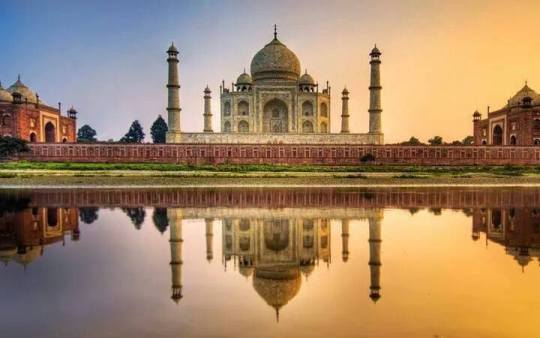
Reflections of India's most famous building, bathed in evening light.
#Taj Mahal#Agra#India#mausoleum#sunset#reflections#minarets#sacred space#evening light#holy sites#shrines#Commonwealth#British Empire#The Jewel in the Crown#Raj
16 notes
·
View notes
Text

*BLUSH* Let's take a moment to appreciate Bertie's skill at stepping over a high rope whilst wearing his kilt! The Crown Jewels remain preserved :D


Also shout out to gorgeous Princess Margaret just breezing along that shoreline, no f*cks given!
Loch Muick, Scotland, 1951. gif made by @for-valour
#the kings peach hahaha#bertie's crown jewels#king george vi#the british royal family#god save the king#george vi#king bertie#the british monarchy#the monarchy#the royal family#albert duke of york#the kings speech#princess margaret#balmoral#loch muick#british royal family#royal family#royal family holiday
72 notes
·
View notes
Text
kate and yelena take a trip to london and kate wakes up alone one night and starts panicking until yelena comes back admitting awkwardly she tried to break into the tower of london to get kate a “little souvenir” to remind them of the trip like kate asked but she’s more confused how yelena didn’t get caught
#all kate wanted was a mug with a british flag not the crown jewels#hawkeye#marvel#kate bishop#yelena belova#pizza dog#lucky#yelena my beloved#yelena black widow#and kate and yelena#bishova#gay marvel#gay#bishlova#yelena boleva#kate bishop x yelena belova#hawkeye tv
45 notes
·
View notes
Text

Crown of Queen Elizabeth ♕ British Crown Jewels
65 notes
·
View notes
Text
Today is The King’s first State Opening of Parliament as Sovereign.
His Majesty will wear the Imperial State Crown, which is traditionally worn by the monarch for ceremonial occasions such as this. You might also recognise it from the Coronation in May.
7 November 2023
—
The Imperial State Crown is one of the Crown Jewels of the United Kingdom and symbolises the sovereignty of the British monarch.
It has existed in various forms since the 15th century.
The 1937 version is worn by a new monarch for the first time in the royal procession following their coronation (having been crowned with St Edward's Crown during the ceremony) and subsequently used at State Openings of Parliament.
The crown is adorned with 2,901 precious stones, including the Cullinan II diamond, St Edward's Sapphire, the Stuart Sapphire, and the Black Prince's Ruby (a spinel).
#King Charles III#HMTK#His Majesty The King#British Royal Family#State Opening of Parliament#Imperial State Crown#Royal Collection Trust#Crown Jewels#State Opening of Parliament 2023#Cullinan II diamond#St Edward's Sapphire#Stuart Sapphire#Black Prince's Ruby
14 notes
·
View notes
Text
Looking for Castle Paravel
I do love a castle by the sea - Tom had Harry Potter, we had The Lion the Witch and the Wardrobe. I've visited Dunluce Castle, which inspired C.S. Lewis, but Dunnottar Castle, south of Aberdeen, is even better.

Added to that, it has a romantic civil war history, being the place where the Earl Marischal was besieged with the Scottish crown jewels, managing to smuggle them out, where they were hidden in nearby Kinneff church until the Restoration.
The Marischal had a suitably royalist set of mottos.


2 notes
·
View notes
Text

❥ Catherine's Royal Vault : The jewellery worn by the Princess of Wales for the State Visit by The Amir of Qatar.
#british royal family#british royals#royalty#royals#brf#kate middleton#british royalty#royal#catherine middleton#duchess of cambridge#earrings#crown jewels#necklace#jewels#jewellery#catherine's royal vault.#catherine's royal vault#from the royal vault.#princess of wales#the princess of wales#princess catherine#princess kate#catherine princess of wales#royaltyedit#my edit#3122024#QatariStateVisit24.1#royal fashion#fashion#style
60 notes
·
View notes
Text

#higginsandcole#imperial state crown#crown#jewels#ruby#diamonds#sapphire#pearl#king charles iii#british royal family
79 notes
·
View notes
Text

As Africa was recovering from the wounds inflicted by slavery on the continent, colonization crept in, and till date, most African countries that were subjected to European imperialist aggression and military invasions continue to counts their loses.
This was especially true as Europeans, before leaving Africa made sure they amassed any valuable item they could lay their hands on.
Though most African states have successfully recovered some of their “taken” valuables from colonial masters, the world’s largest diamond referred to as the ‘Star of Africa’ that was taken from South Africa during colonization might never leave the British crown jewel collection.
Today, used by the British Monarchy in their Crown Jewels selection, the Cullinan diamonds as they are formally known remains the largest diamond ever found.
The stone was discovered near Pretoria in South Africa on 26 January 1905.

As history holds, after the Boer republics, Orange Free State and the South African Republic were defeated in battle by the British who went on to institute their leadership throughout modern-day South Africa . In 1907, the Cullinan was presented to King Edward VII by the Government of the Transvaal (a former province of South Africa bordering with Botswana and Zimbabwe to the North.)
Britain insists it was a symbolic gesture intended to heal the rift between Britain and South Africa following the Boer War. However, history recounts that the British were the ones paying repatriations.
The stone was taken under heavy British police escort to Sandringham and formally presented on the King’s 66th birthday.

Today, the South African diamond plays a vital rule in British monarchy as it lights up the Imperial State Crown which holds 317.4 carats Cullinan II on the front.

The remaining numbered diamonds were kept by Asschers (the diamond cutter) as payment for their work.
Cullinan VI and VIII were later brought privately by King Edward VII as a gift for Queen Alexandra, and the others were acquired by the South African Government and again back to the British. According to the Royal Collection Trust, the remaining piece from the “Star of Africa” was given to Queen Mary in 1910, in memory of the Inauguration of the Union.
#f2fafrica.com#History#How Europeans took the world’s largest diamond from South Africa in 1906 and made it the British Crown Jewel
3 notes
·
View notes